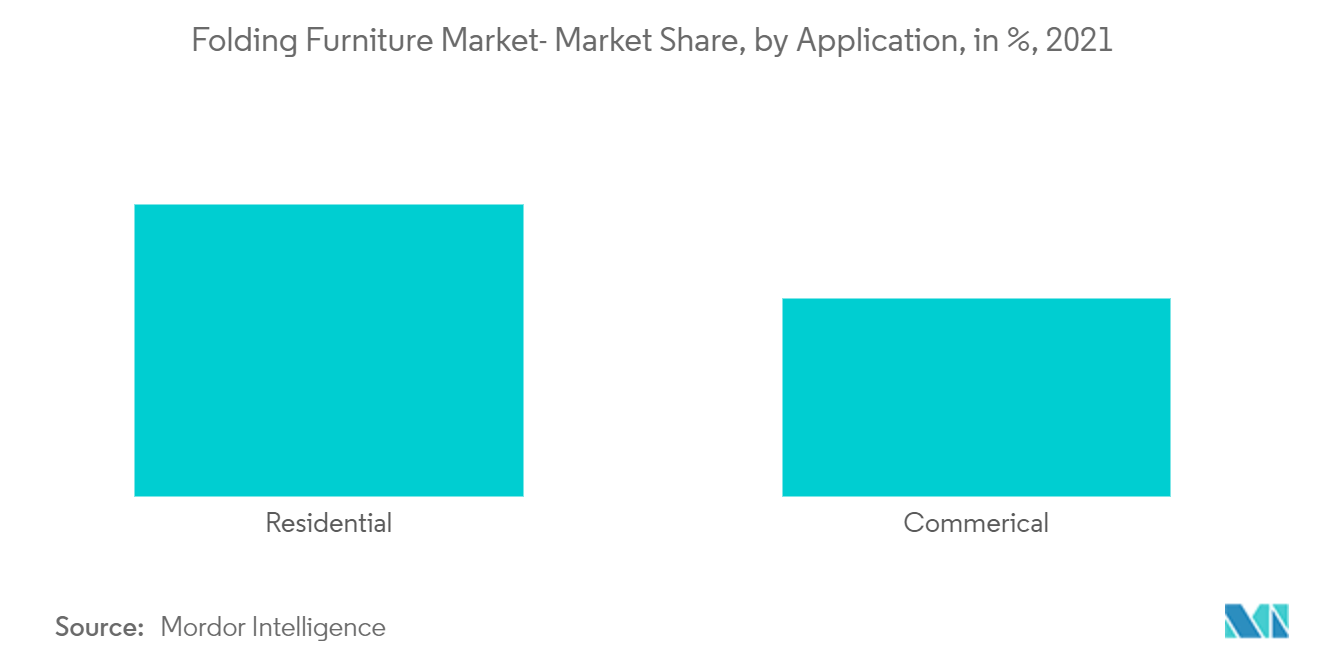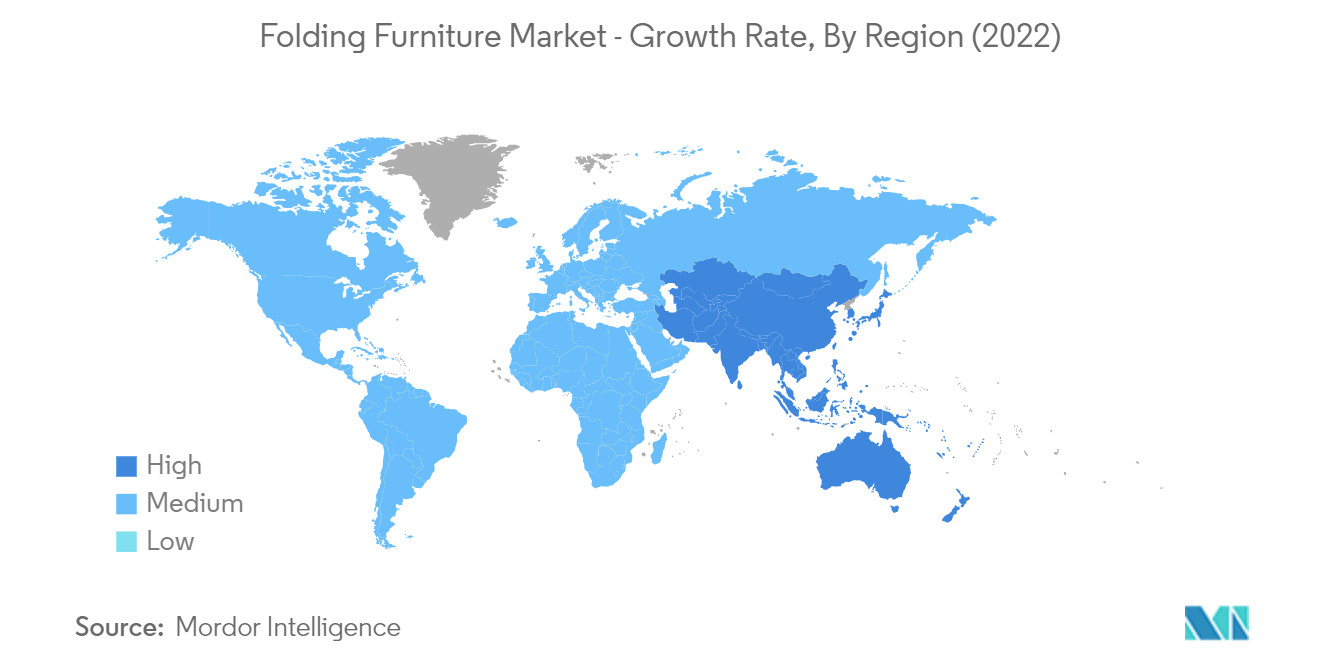Market Trends of Global Folding Furniture Industry
The Residential Application Dominates the Market
By application, the folding furniture market has been segmented into residential and commercial. The residential segment dominated the market with a 62% share last year. It includes the use of kitchens and dining rooms, living rooms, bedrooms, and outdoor areas. These factors are driving the demand in the market. The increasing residential construction activities across the world are driving the market growth of the segment. The commercial segment is expected to contribute significantly to the market studied during the forecast period. Folding furniture is installed in numerous sub-applications within the commercial construction sector, such as corporate offices, healthcare centers, and educational institutions. They are also installed in cafeterias and hotels.

Asia-Pacific is Expected to Grow at a Fast Pace
A significant number of people tend to move to large cities for better opportunities. This phenomenon gradually decreases the average living area and increases the cost of houses. Therefore, the folding furniture is the best suitable option. Cities like Beijing (China) possess high growth potential for the market. Urbanization is another factor that drives the growth of the folding furniture market, as it decreases the average living space and increases the value of available limited space, thereby making folding furniture the most suited option. Mumbai, Kolkata, Karachi, and Shenzhen are other cities that possess high growth potential. The increasing residential and non-residential construction activities in the region are driving the growth of the market.
North America and Europe are also major regions for the folding furniture market. The increasing demand for low-maintenance interior products is driving the growth of the market in these regions.


